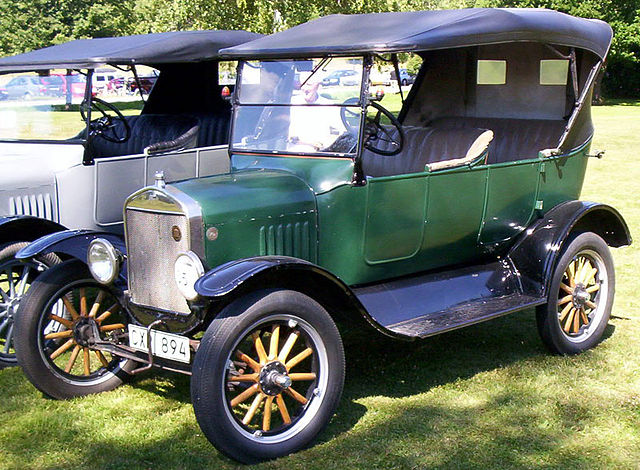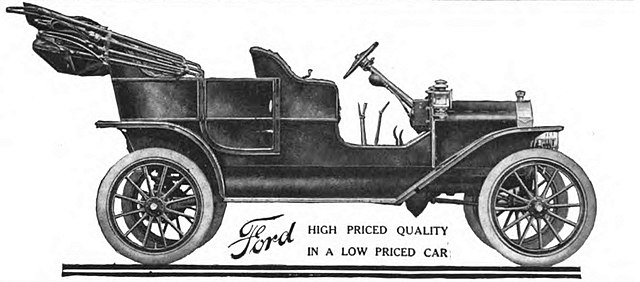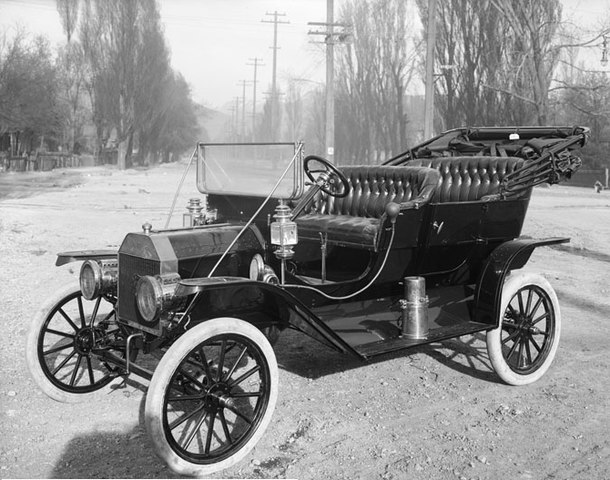
The Ford Model T, colloquially known as the “Tin Lizzie,” holds a venerable position in automotive history. Produced between 1908 and 1927, it introduced assembly line manufacturing, making car ownership accessible to the masses. This vehicle not only revolutionized the auto industry but also had a profound impact on American culture and society, catalyzing significant economic and social changes.
This article delves into the Model T’s inception, production, features, impact on society, and its enduring legacy.
Birth of the Model T

The Ford Model T was the brainchild of Henry Ford, who sought to create a reliable, affordable, and efficient automobile for the average American. Its development marked a departure from the custom, hand-built cars of the era, which were priced beyond the reach of ordinary people.
Introduced on October 1, 1908, the Model T came with a price tag that made it accessible to a significant portion of the population, setting the stage for a revolution in personal transportation.
Ford’s vision extended beyond just manufacturing a car; he aimed to improve the lives of his employees as well. The company’s innovative production techniques not only streamlined manufacturing but also allowed Ford to pay his workers an unprecedented $5 per day.
This wage enabled the workers to become potential customers, a concept that would later be recognized as “Fordism,” illustrating the cyclic growth of a consumer-based economy.
The Model T was initially offered in various body styles, including a two-seat runabout, a four-seat tourer, and others. Despite these variations, all models shared the same reliable 2.9-liter inline-four engine and a simple design that made the car easy to drive and maintain.
Production and Innovation

The production of the Model T introduced the moving assembly line to the automotive industry, a concept that revolutionized manufacturing worldwide. Initially, the Model T was built in a conventional manner, but by 1913, Ford had perfected the assembly line process, significantly reducing the assembly time and cost of the car.
This innovation slashed the production time per vehicle from over 12 hours to just 93 minutes, dramatically lowering the price and making the Model T even more accessible.
The adoption of the assembly line had profound implications for industrial manufacturing, setting a new standard for efficiency and worker management. It allowed Ford to produce a vehicle at an unprecedented rate, meeting the soaring demand. By 1927, when production of the Model T ended, over 15 million units had been sold, making it one of the best-selling cars of all time.
The introduction of the assembly line also led to standardized parts, which were interchangeable across different models of the car. This standardization was a boon for owners, making repairs simpler and parts easier to come by, further enhancing the Model T’s appeal.
Features and Design

The Ford Model T was renowned for its simplicity, reliability, and durability. Powered by a 20 horsepower, 2.9-liter inline-four engine, it could reach a top speed of about 45 miles per hour, which was sufficient for the roads and driving conditions of the time. The car featured a planetary gear transmission which, while offering only two forward gears and one reverse, was innovative and made driving more accessible.
The Model T was designed with practicality in mind. Its high ground clearance allowed it to navigate the rough, unpaved roads of rural America easily. Additionally, its simplicity meant that with basic tools and a rudimentary knowledge of mechanics, owners could perform most repairs themselves.
One of the most remarkable aspects of the Model T was its adaptability. It was not just a car; it was a platform that owners could modify to suit a range of needs, from farm equipment to snowmobiles. This versatility further cemented its popularity across a broad spectrum of the American populace.
Societal Impact

The Model T had a profound impact on American society. It mobilized the masses, making personal transportation affordable and accessible. This mobility transformed the social fabric, enabling people to travel further for work, leisure, and education, thereby bridging the gap between rural and urban America.
The economic impact of the Model T was equally significant. It contributed to the growth of subsidiary industries, such as petroleum, steel, and rubber, and played a pivotal role in the development of the modern consumer economy. The car also fostered the growth of a nationwide highway system, which facilitated interstate commerce and travel.
Moreover, the Model T’s production methods heralded a new era in labor relations and economic organization. The high wages paid by Ford led to increased purchasing power among the working class, promoting a cycle of consumption that fueled the growth of the American economy.
Legacy
The legacy of the Ford Model T extends far beyond its production years. It stands as a symbol of innovation and democratization of technology. The principles of assembly line production introduced by the Model T have been adopted and refined across various industries worldwide.
Today, the Model T is celebrated for its historical significance and is a prized possession for collectors. Museums and vintage car enthusiasts preserve its memory, showcasing its simplicity and the revolutionary changes it brought to manufacturing, society, and the economy.
The Ford Model T not only changed the way cars were made but also how they were perceived. It transformed the automobile from a luxury item into a necessity, forever altering the landscape of the American dream. Its enduring legacy is a testament to Henry Ford’s vision of making the car accessible to every American, a vision that indeed shaped the 20th century.
